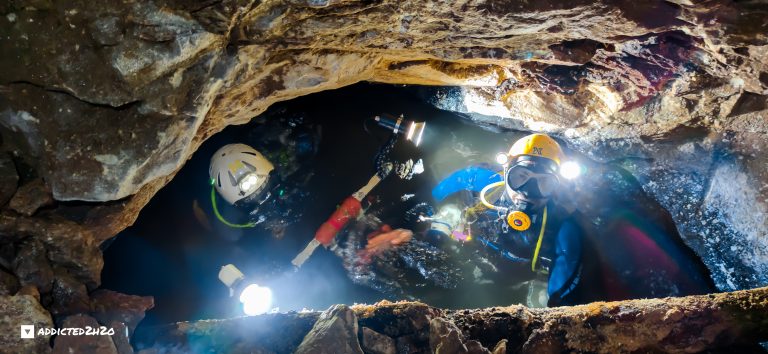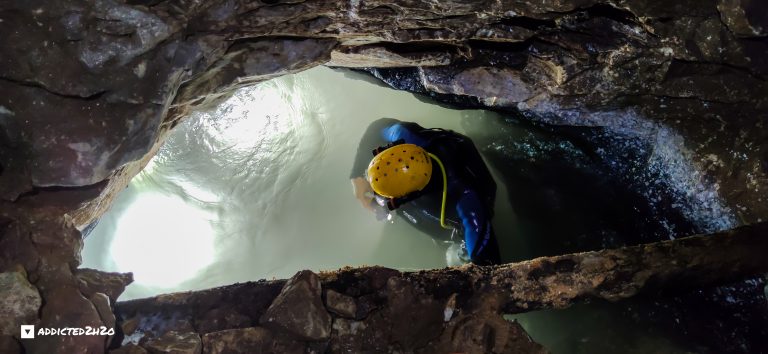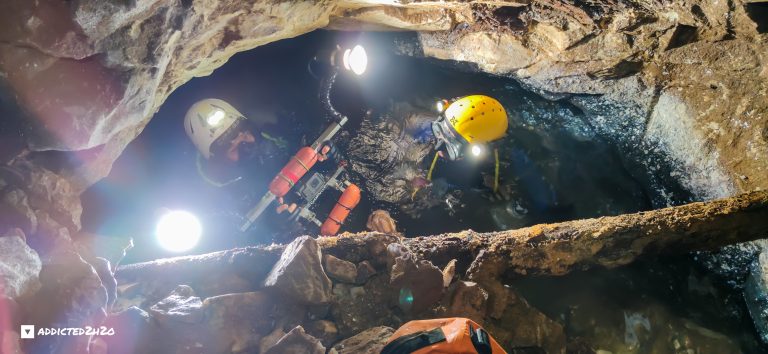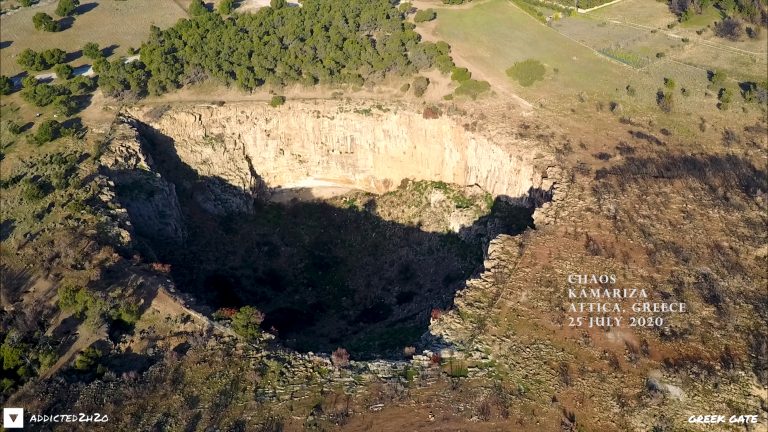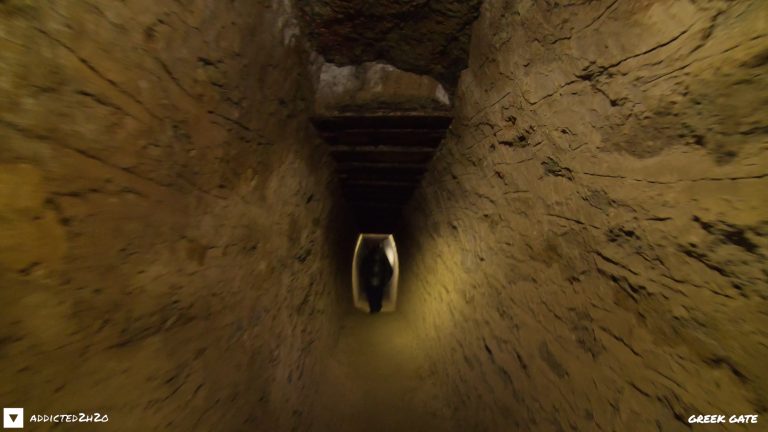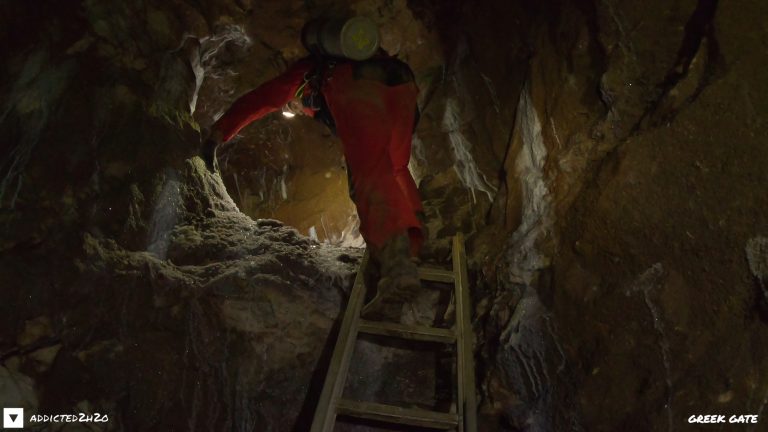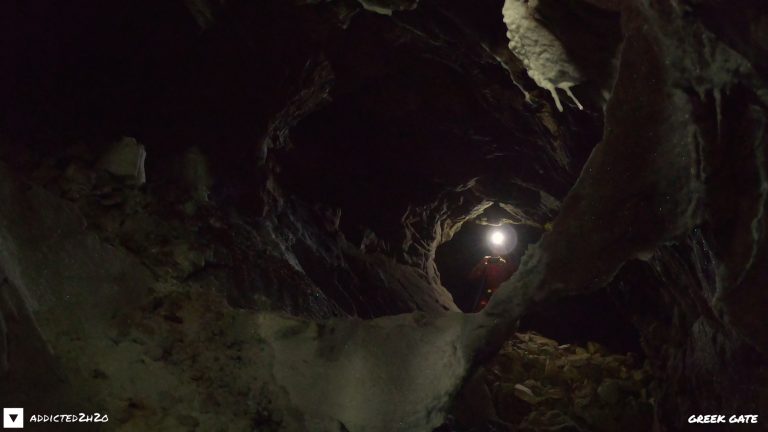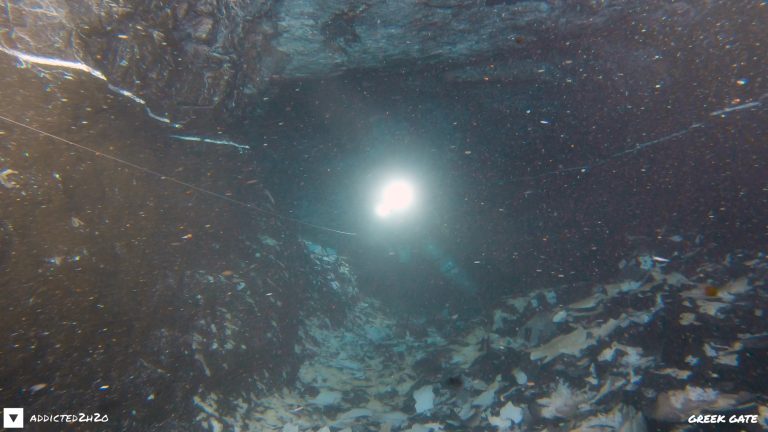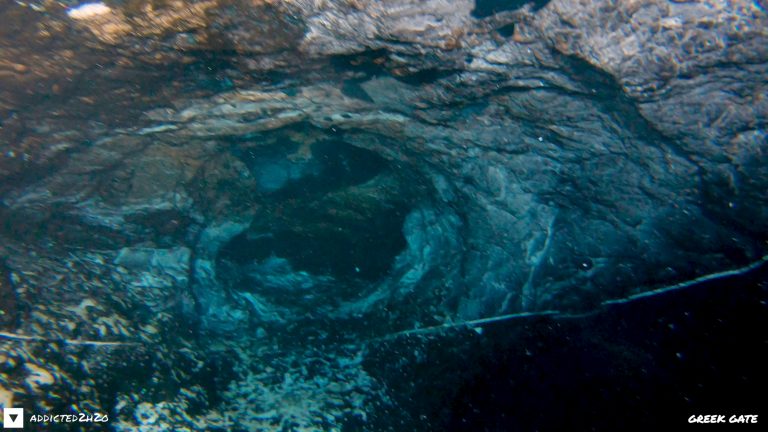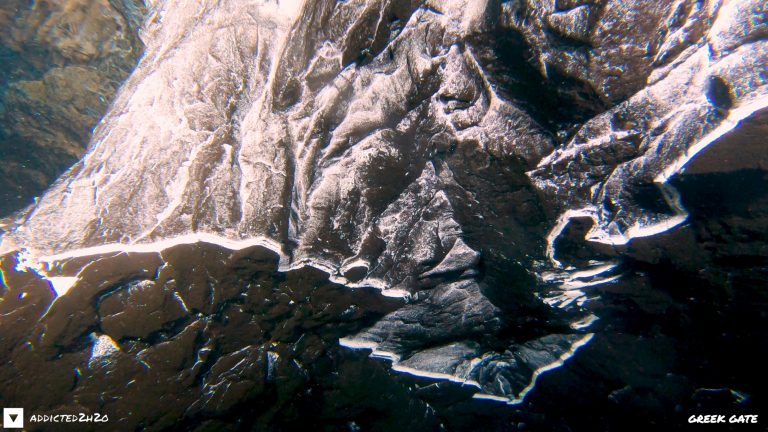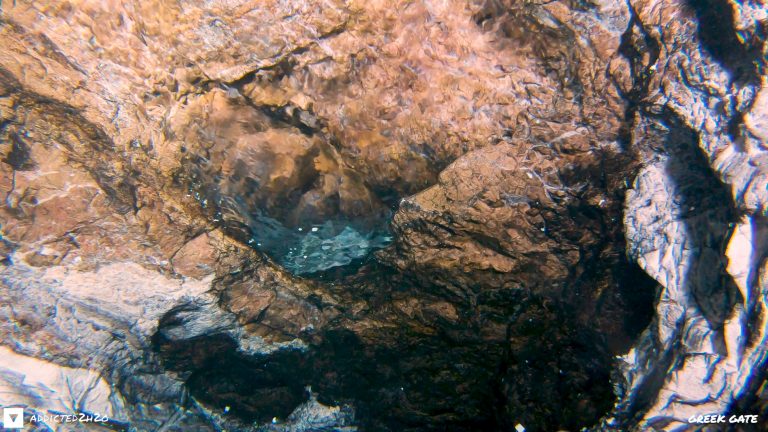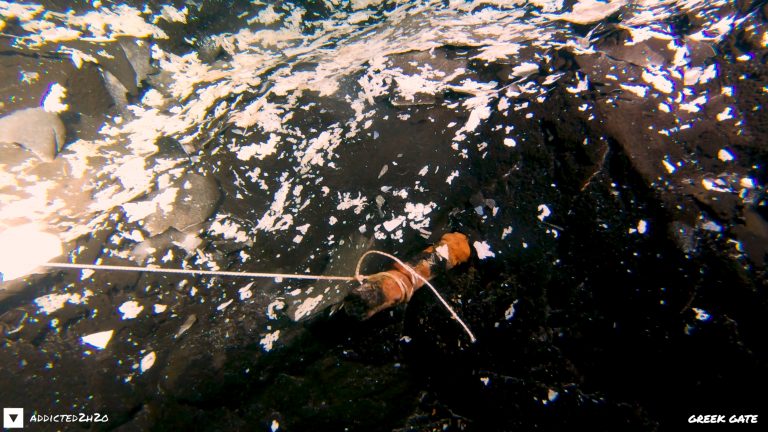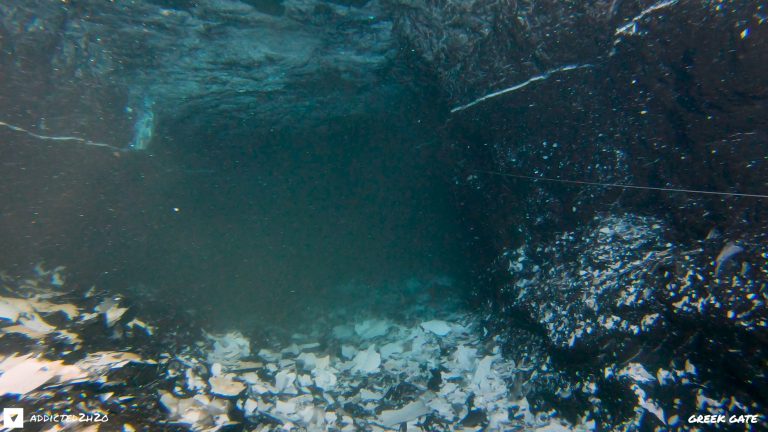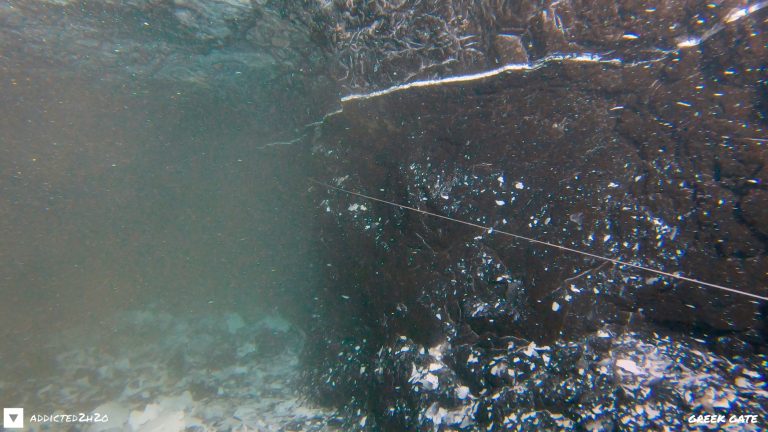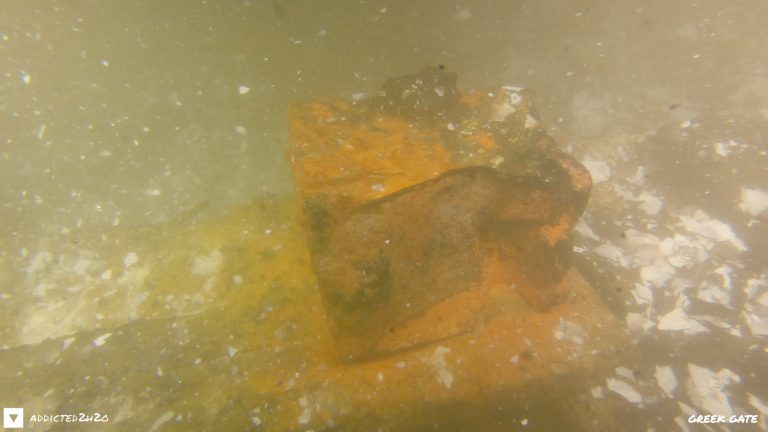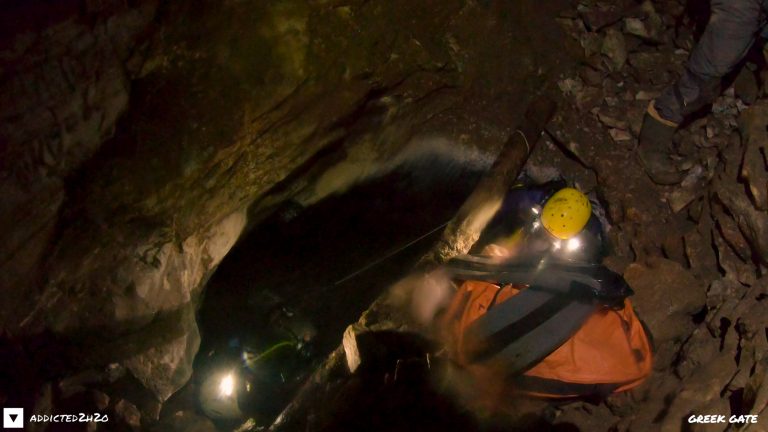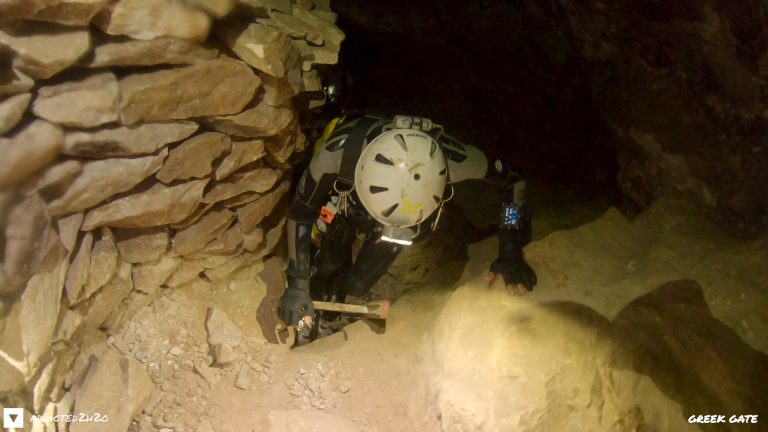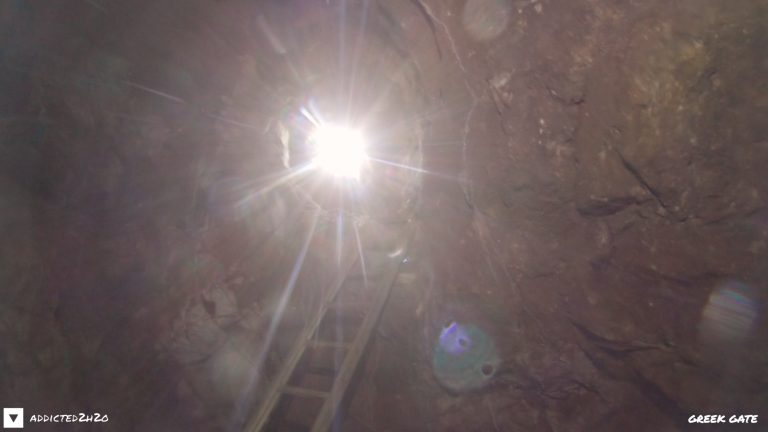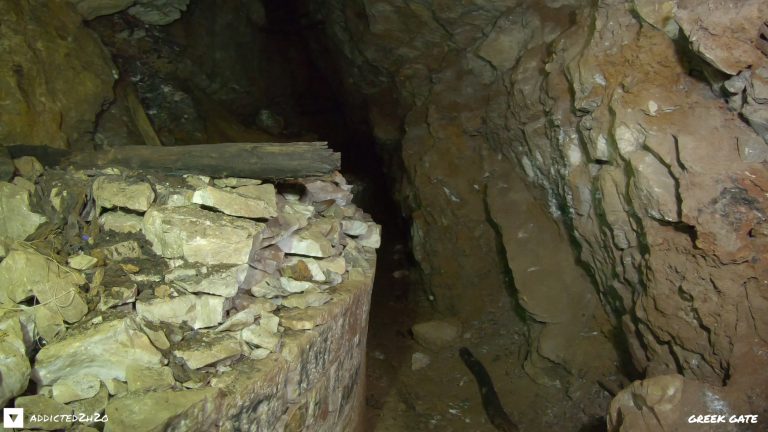Underwater Exploration
Jean Baptiste
On the 25th of July 2020 our team visited the central gallery in the area of Kamariza. Under the guidance of experienced mine explorers Hercules Katsaros and Vasilis Stergiou the team descended deep into the mine to explore a flooded opening.
Hercules Katsaros had recently discovered a new opening in the mine uncovering a new route which extended many meters before coming to an opening filled with water. In his previous visits to this section of the mine Hercules had documented this area with photos and videos and shared these images with the team. This helped evaluate and organize a visit in the end of July.
The historical importance of the Jean Baptiste mine is great as it is one of the first constructed and developed by Serpieri. Various minerals can still be found in the mine including one which is unique and can only be found in this mine. From many inscribings found at the section of the mine which we visited, it is believed to be dated between 1906 and 1910.
Ioannis Baptista Serpieri (Italian: Giovanni Battista Serpieri, 1832 – 1897) was an Italian businessman, who was active in Lavrio, but also in other parts of Greece, with mining operations. He was one of the first entrepreneurs to deal with mining in modern Greece. In Greece he founded in 1864 the company Roux – Serpieri – Fressynet CE, with a partner the French banking company I.Roux – Fressynet based in Marseilles, to exploit silver lead ores (but also the remains from the ancient mines). He followed the example of his father in Sardinia, reviving the Lavrio Mines which had remained inactive since antiquity. The company operated until 1873, when after the Lavriotiko issue, it was acquired by the Bank of Constantinople with Andreas Syggros as the main shareholder and HMCL was created. Hellenic Mining Company of Lavrio with the project of the exploitation of slags and estuaries from the ancient mines in which Serpieris also participated. Two years later, Serpieris founded in 1875 the Compagnie Française des Mines du Laurium (or French Mining Company of Lavrio) with the task of exploiting the mines of Lavrio. The Hellenic Company operated until 1917, until the depletion of the materials it operated, the slags and the estuaries (in 1930 it sold its facilities), while the French Company until 1982 (when it leased its facilities to the state-owned HMCL which closed in 1989).
This mine was the most difficult we have visited to date, after more than a year when we began exploring the Mines of Lavrio. Despite the huge difficulties in transporting the equipment, Jean Baptiste is characterized as extremely difficult in terms of access difficulty even without hauling dive equipment, compared to other mines the group has visited in the past. The mine extends to many branches of multilevel galleries, extending to a large depth and several kilometers in length.In two sections of the mine we had to deploy a ladder in order to reach our final destination.
In total it took the team one and a half hour to reach the flooded section of the mine and approximately the same time to return safely to the surface. The dive itself was a 50 to 60 meter siphon with three small chambers, on right after the water entrance, another in the mid section approximately 20 meters in, whilst the third in the end of the route. A cave line has been placed throughout the entire route. The team are happy to have explored this small underwater section of this mine, making this the 8th mine explored in the past several months since the project started.
The Teams:
Addicted2h2o: https://addicted2h2o.com
GreekGate: https://www.facebook.com/PyleEllenikonArchaiologikonIstorikonSpoudon/
Sources:
-Lavrio Historical-Technological Cultural Park (www.Itp.ntua.gr/home_en)
-The Archaeological Guide of Thorikos (Ministry of Culture)
-https://el.wikipedia.org
Historical Research:
Hercules Katsaros
Support & Logistics:
Vasilis Stergiou
Hercules Katsaros
Apostolis Tzamalis
Akis Pallis
Mine Divers:
Erikos Kranidiotis
Stelios Stamatakis
Do what you can’t
